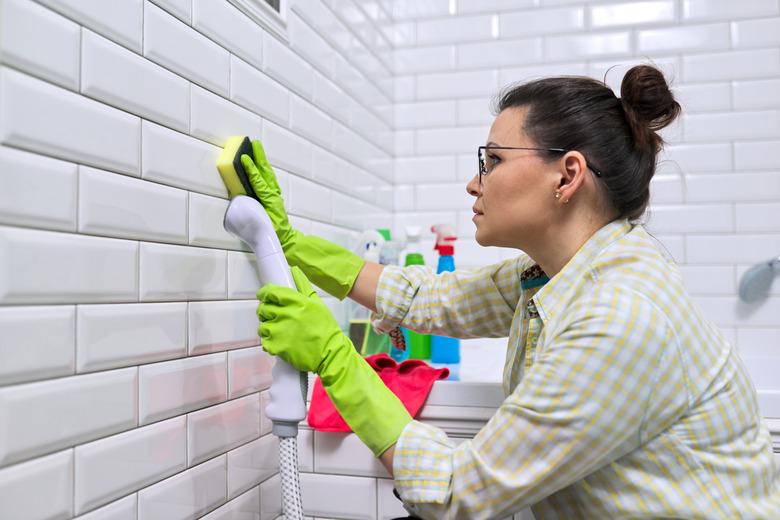How To Steam Clean Walls
We may receive a commission on purchases made from links.
Steam cleaning walls isn't something that needs to be part of your weekly cleaning routine, but it can be useful for deep cleaning dirty walls and/or disinfecting after you've had a sick person or pet in your home. When done properly, using a steamer lets you clean walls without removing paint; however, it's absolutely possible to damage your walls with steam. The key to success is to only use steam on certain finishes and to keep your steamer moving at all times.
Should You Steam Clean Your Walls?
Should You Steam Clean Your Walls?
Whether steam cleaning is a viable option for cleaning your walls depends on how they're finished. Steam cleaning is generally fairly safe for painted walls unless they're coated in water-based paint. It's also a safe way to clean and disinfect sealed tile and brick walls.
Steaming should never be done on papered walls. Using a steamer is actually helpful when you're trying to remove wallpaper because the steam dissolves the wallpaper glue. This is obviously not the result you're looking for when you're only trying to clean your walls. It can also be risky to steam clean wooden walls since high heat and water can cause wood to warp. Never use steam to clean unsealed surfaces, like raw wood paneling, and always spot test steam on an inconspicuous patch of wall before using it to clean a large area.
Tip
If you do have dirty wallpaper, use just a cloth dipped in warm, soapy water to clean it and follow with a dry cloth. (Spot-check a discreet area first to make sure the soapy water doesn't damage the paper.) There are commercial products that can also be useful for removing marks and smudges from papered walls.
Choosing a Wall Steamer
Choosing a Wall Steamer
You don't need a special wall steamer to clean walls. Any number of household steamers can be used for this job. A handheld hard-surface steam cleaner is easy to maneuver as a wall steam cleaner, while a heavy-duty steamer with a nozzle and hose may help you complete the job quicker. Steam cleaning walls is also one of the many ways you can use a garment steamer should you have one on hand.
How to Steam Clean Walls
1. Prepare the Walls
Steam may damage certain kinds of furniture, especially wooden pieces, so move everything at least a few feet away from the walls before you start cleaning. Take down any artwork, unpainted shelves, and other decorative fixtures that could be damaged by steam. Dust walls with a microfiber cloth to remove any debris.
2. Prepare the Steamer
Follow the manufacturer's directions to fill your steamer's reservoir with water and heat it up. Don't add vinegar or anything other than water unless the manufacturer's directions say otherwise. (Vinegar can be useful for cleaning a steamer itself, but you don't need it on your walls.)
3. Do a Spot Test
Choose an area of wall that's low to the ground or typically hidden by furniture to test the steamer. Hold the steamer about 6 inches away from the wall and release a burst of steam. Follow by wiping the area with a microfiber cloth. (If you have a steamer with a microfiber cloth head attachment, you can simply brush the wall instead of aiming a blast of steam at it.)
4. Steam Clean Walls
Assuming you see no damage from your spot test, you're ready for steam cleaning walls. Holding a nozzle steamer about 6 inches away from the wall, start at the top of the wall and work downward. Keep the steamer constantly moving so it's not directing too much heat in any one place for too long. After you've steamed one section of wall, wipe it down with a dry microfiber cloth to remove dirt and keep water from dripping. Repeat this process until the entire wall has been steamed.
